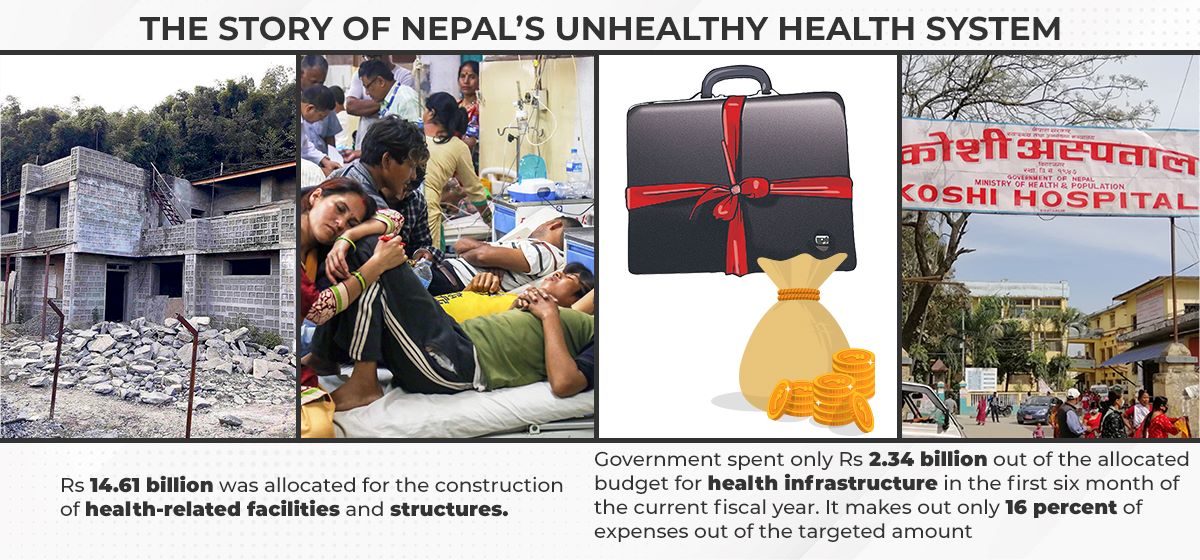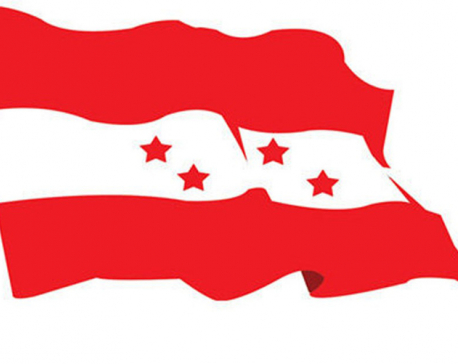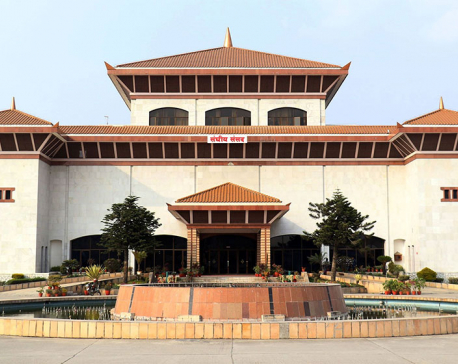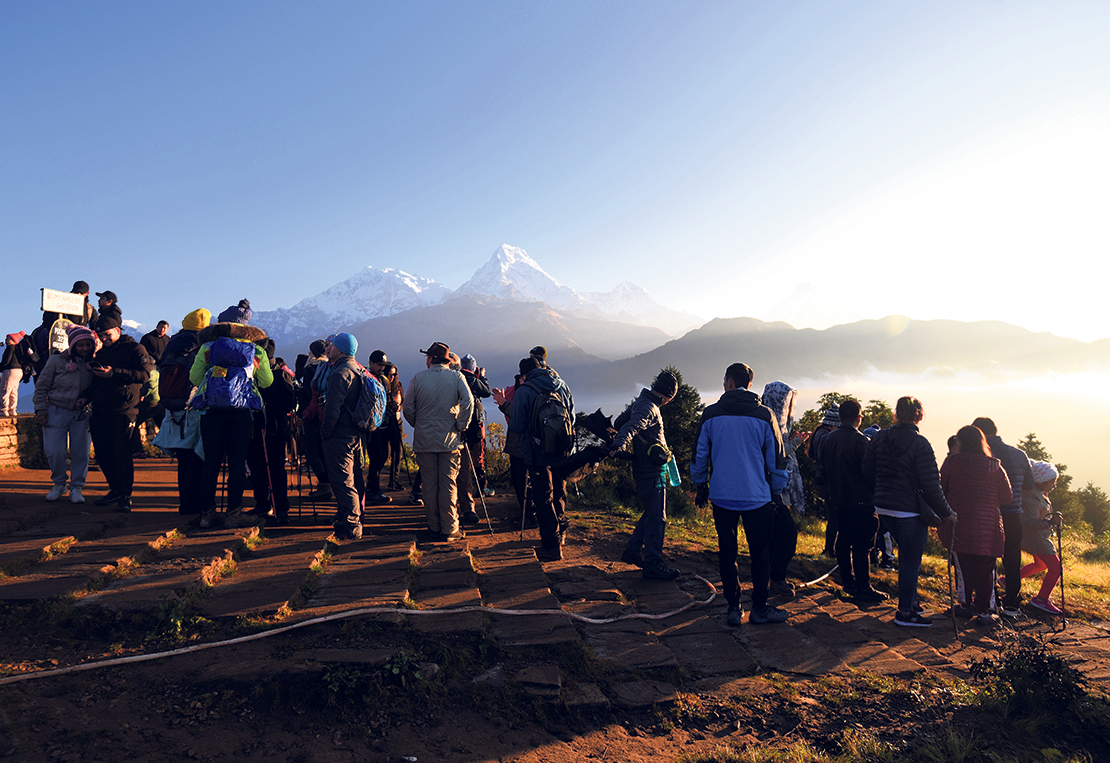
OR
The Story of Nepal’s Unhealthy Health System
Published On: March 1, 2022 06:30 AM NPT By: RAJESH KHANAL

The government has allocated Rs 146 billion for health infrastructures development in the current fiscal year. But the budget remains largely unspent even after six months of the current fiscal year.
KATHMANDU, March 1: The major earthquake that hit the country in April 2015 was a rude reminder to everyone, our policymakers included, that Nepal's health infrastructure was not only poorly-equipped but also far less than adequate to deal with an emergency situation. Following the mega quake, the country's major hospitals were overwhelmed with patients with critical injuries, and many of them were deprived of proper care.
The tragedy that the earthquake measuring 7.8 on the Richter Scale left was soon forgotten. Our policymakers and those in the government did not feel the urgency to develop critical health infrastructure.
And again there was the COVID-19 pandemic that wreaked havoc across the country in early 2020, reminding the urgency to develop and expand the country's critical health facilities and structures. A large number of people died due to lack of proper care as they were denied beds in hospitals. The shortage of oxygen was equally chronic when the pandemic was at its peak in the country.
Thanks to continued government apathy, the country had a single lab to test COVID-19 when the pandemic hit the country in March 2020. It was only after the cases of the pandemic soared that the government authorities started showing some concern to improve the largely neglected health infrastructure. But the actual progress in this front has remained dismal till date.
When the government introduced the budget for the fiscal year 2021/2022, everyone including politicians predicted that a fresh wave of COVID-19 was imminent in the country as many countries in Europe had already started witnessing a surge in COVID-19 cases. Keeping this in mind, the government allocated adequate resources to improve the country's ailing and aging health infrastructure.
Budget allocated for health infrastructure development
In the current fiscal year, the government has allocated Rs 146.72 billion mainly to develop necessary health infrastructure. Of the total amount, the earmarked fund for the arrangement of vaccines alone stands at Rs 26.75 billion while Rs 14.61 billion was allocated for the construction of health-related facilities and structures.
Now, the first half of the current fiscal year has already passed by and the third wave of the COVID-19 is almost over in the country. But the budget allocated for developing vital health facilities and structures has largely remained unutilized as the government's expenditure in this sector remains dismal. What is even more worrisome is the government authorities concerned do not seem serious enough to expedite expenses in the health sector even as there are apprehensions that a fresh wave of the pandemic could hit the country again.
According to the Ministry of Finance (MoF), the government spent only Rs 2.34 billion out of the allocated budget for health infrastructure in the first six month of the current fiscal year. It makes out only 16 percent of expenses out of the targeted amount, shows the mid-term budget review released by the MoF.
Of the amount spent for health infrastructure, Rs 11.20 million has been spent for purchasing equipment related to drugs manufacturing. Similarly, Rs 613.40 million has been spent on upgrading the outpatient departments and Rs 94.40 million under the heading of hospital service. Likewise, Rs 1.61 billion has been spent on public health service while Rs 12.70 million has been spent on research purposes.
The MoF document shows that the actual expenditure was far lower than the targeted ones while it also deviated from the government’s actual plan.
The government announced to spend Rs 1.30 billion for the construction of a well-equipped hospital with 300 beds in the Kathmandu Valley and a 50-bed hospital in each of the seven provinces for the treatment of communicable diseases within the next fiscal year. Similarly, Rs 340 million has been allocated for the development of necessary infrastructure including the ICU ward at Kanti Children's Hospital in Kathmandu.
Conducting free tests and treatment of COVID-19 in all government laboratories and hospitals and making it mandatory for all hospitals with more than 100 beds to install their own oxygen plants are included in the government’s ambitious plan. Complete exemption of value added tax on the import of equipment required for installing oxygen production plants, providing a 50 percent of the total costs as grant to the hospitals concerned and waiving 50 percent of electricity tariffs on the production of oxygen were among the incentives announced in the budget to boost oxygen production inside the country.
The budget also allocated Rs 4 billion for the purchase of necessary equipment including ICU, HDU, ventilators and testing kits needed for the treatment of COVID-19 patients.
In addition, giving continuity to risk allowances as well as other fringe benefits and other incentives to the health workers and staff working in the labs, and cleaners and security personnel who are directly involved in COVID-19 prevention and treatment are among the commitments made by the government. The government has allocated Rs. 37.53 billion for the prevention, control and treatment of the pandemic.
Mid-term budget review paints a bleak picture
According to the mid-term budget review, the government has just started the process of a detailed project report for building well equipped 300-beds at Sukraraj Tropical Infectious Disease Hospital, Teku. Among the targeted construction of 50 beds hospitals in each of the seven provinces, the work is at preliminary stage only in Doti and Bharatpur, Chitwan.
While the construction of primary hospitals with 5, 10 and 15 beds in 396 local units is under construction, the process for the construction of 1,500 beds sophisticated super specialty centers has not even kicked off till date. Health ministry officials said the government has so far purchased a few oxygen plants, cylinders, and vehicles to transport liquid oxygen and equipment necessary for the storage facility.
It may be noted that the government had allocated Rs 90.69 billion for the Ministry of Health and Population that included the construction of health related infrastructure in the budget of the last fiscal year. However, only around 15 percent of the earmarked amount was utilized due to the COVID-19 pandemic.
A World Bank report entitled ‘Fiscal Policy for Sustainable Development: Nepal Public Expenditure Review’ showed that the government’s spending in the health sector was on a downward spiral in the past few years before COVID-19 hit the country. The federal spending on the health sector fell to 1.2 percent of the gross domestic product (GDP) in the fiscal year 2018-19 from 3.4 percent in the fiscal year 2014-15.
Thanks to the continued government apathy, the country had only a single lab to test for COVID-19 when the pandemic hit the country in March 2020. It was only after the rising cases of COVID-19 that the government started showing concern to improve largely neglected health infrastructure, which however is still pretty slow.
Government efforts
In 2017, the government even endorsed Nepal Health Infrastructure Development Standards targeting to achieve integrated development of the sector. Defining the roles of federal and sub-national governments, the regulation has been envisioned to ensure an effective coordination among health related infrastructure, skilled manpower, equipment and quality services.
An official at the Ministry of Finance said that the slow expenditure pattern of the overall development budget has also hit the infrastructure development of the health sector. “There is a need for systemic reform to promote capital expenditure to yield rewarding results,” the source said under the condition of anonymity.
Roshan Pokharel, Secretary at the Ministry of Health and Population, and a number of other officials, declined to comment on the issue when Republica approached them for a response from the ministry concerned.
You May Like This

NC slams govt for annulling political appointment by erstwhile govt (with full text)
KATHMANDU, July 5: Nepali Congress has slammed government for annulling all political appointments made by the then government after the... Read More...

Govt to propose budget on May 29 after parliament approves govt plans
KATHMANDU, May 27: The budget for current fiscal year 2018-2019 will be presented on May 29, Tuesday 4:00 PM. ... Read More...

Rural municipality to hold salaries of govt teachers not sending their children to govt school
JAJARKOT, June 30: A rural municipality in Jajarkot district has decided to stop the salaries of teachers at government schools in... Read More...




Just In
- UML's National Convention Representatives Council meeting today
- Gandaki Province CM assigns ministerial portfolios to Hari Bahadur Chuman and Deepak Manange
- 352 climbers obtain permits to ascend Mount Everest this season
- 16 candidates shortlisted for CEO position at Nepal Tourism Board
- WB to take financial management lead for proposed Upper Arun Project
- Power supply to be affected in parts of Kathmandu Valley today as NEA expedites repair works
- Godepani welcomes over 31,000 foreign tourists in a year
- Private sector leads hydropower generation over government







_20220508065243.jpg)







Leave A Comment